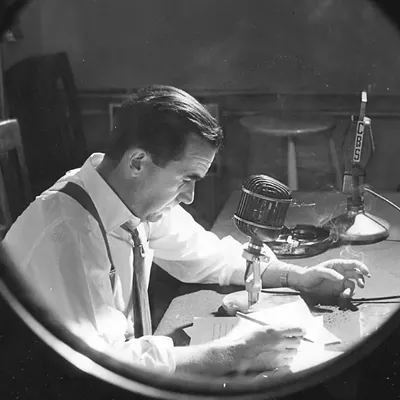The plan that eventually won, however, on a close 4-3 vote, more reflected a "power to the people" mindset. The council majority was intent on denying the South Hill more than two members on the council, while ensuring that the northeast section of the city -- Nevada-Lidgerwood and Hillyard in particular -- would have two members, no matter what.
While, of course, districts are never designed explicitly to achieve equal turnout, surely, we argued, the council was wrong to select a districting design for the express purpose of rewarding people who don't vote while penalizing people who do.
So what do the voting numbers over the past few years reveal? In four council elections (both primary and general) since 2003 where more than two candidates have competed for the seat in the primary, the turnout in District 1 (Northeast), as a percentage of the whole, has been consistently dismal: 22.6 percent, 23.4 percent, 23.4 percent, and 22.5 percent. Contrast these percentages with the turnout as a percentage of the whole in Districts 2 and 3 respectively: District 2 (South Hill) -- 41.5 percent, 38.1 percent, 37.0 percent, 39.3 percent; and District 3 (Northwest) -- 35.9 percent, 38.5 percent, 39.6 percent, 38.2 percent. Effectively, voters on the South Hill and in the northwest section of the city have had their votes intentionally devalued -- upwards of a third less in value than a vote cast in District 1. Predictably, we have produced a permanent pattern of both under- and over-representation.
Also, the system has produced any number of unintended consequences not anticipated by the "power to the people" majority. Which brings us to Al French's defeat in last week's primary. Months back a former member of the council let me know that he was going to support French. I grimaced and gave him the bad news. French, I opined, had no chance. Yes, he certainly had the experience and ability; but, I pointed out, he was facing a South Hill incumbent who had the support of the usual suspects -- and, I added, the people who knew French weren't going to vote anyway.
Then, to my great surprise, Mayor Hession began fumbling and stumbling into one pile of political dung after another: stiffing two neighborhood councils while blatantly ignoring the Comprehensive Plan over the Bernard Street project; "ham handily" (Jim West's characterization) ramming his so obviously flawed MATRIX study down the throats of his staff, who in this instance did know better; making several unexplained personnel decisions that resulted in major morale problems amongst staff (evidenced by the number of senior people who bailed -- and, no, these weren't time-serving entrenched bureaucrats); in the 11th hour finding for the police and fire departments phantom money that never existed before the mayoral race began to tighten; giving every evidence that he had effectively turned over the city to his newly ordained "Chief Operating Officer" -- to recall only a few.
I began to wonder if maybe the politically savvy French could show my analysis to be flawed. I knew that he was counting on a much better turnout than District 1 had provided him in the past. Also, I knew that his polling numbers showed him doing well in precincts that went for Hession the last time the two competed. And like many others, he was getting reports that Hession's support, while wide, was paper-thin.
But District 1 turnout, as the vote count shows, was as low as ever. The voters split between Mayor Hession and Councilmember Verner, and Al French has been left on the sidelines -- ironically done in by the district system intentionally rigged to help him out. Turns out that "power to the people" was only an illusion after all.
Which leads to this question: Had Al French won his council seat after successfully appealing not just to Nevada-Lidgerwood and Hillyard, but Indian Trail as well (as our plan would have required him to do), would he not still be in the mayoral race? I think so.
The irony of it is that the "power to the people" council majority brought on exactly what they had sought to alleviate: Through the creation of their illusion, they managed to isolate politically this poorer, alienated part of town even more than it had been previously.
The structural political bias they intentionally built into the present district design, taken together with the manifest unintended consequences spawned by their districting map, are reasons enough for reconsideration. And if memory serves, at the time the present design was chosen, the promise was made to reassess after five years or so. We have not kept that promise.
Ah, but 2010, the year of the census, is coming right up. What perfect timing. And it's far enough down the road to allow for planning and deliberation. Now there's a thought.














